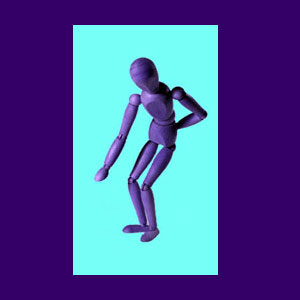
Heel spurs are a typical diagnostic theory used to explain foot pain and are commonly associated with plantar fasciitis.
Spurs were long thought to inherently cause pain and were often treated surgically. Now it is well established that prominent bone spurring of the heel is not typically the source of any pain or related discomfort, although some care providers still make the diagnosis in certain instances.
Spurring is typically blamed when the patient suffers localized focused symptoms in the heel of the foot, especially on pressure. Diagnostic imaging will confirm the presence of spurring on the heel bone, yet will not tell whether the spurs are actually problematic or coincidental. Research shows that a great number of patients demonstrate minor spurring, or no spurring at all, but complain of significant heel discomfort. Meanwhile, many patients without any foot pain have severe structural spurring.
This essay provides a clear look at why skeletal spurring on the heel is often an incidental finding in foot pain patients, as well as details the actual source of symptoms in these same patients.
What are Heel Spurs?
Spurs are small abnormal bone growths, typically in the shape of a hook, which form on the tip of the heel structure. These spurs were previously thought to cause pain, since they would be affected by the weight of the body while standing, walking or performing any athletic activity, becoming an area of increased pressure. Spurs were the bread and butter of podiatrists and podiatric surgeons for many years. Operating on these innocent scapegoat conditions was a very lucrative trade indeed.
Half of the general population has spurs and up to 70% of people with plantar fasciitis also demonstrate spur growth. While the fasciitis is typically blamed for pain, this diagnosis is not much more enlightened than blaming the asymptomatic spurs. It should be noted that the majority of people with spurs on their heels never even know they exist, since they create no pain, discomfort or ill effects whatsoever.
Treatment of Heel Spurring
Some care providers still make use of this condition to put some extra cash in their pockets. Pain management drugs and injection therapies are used as art of a symptomatic treatment routine for both spurs and fasciitis. Surgery is reserved for those patients whose pain does not resolve on its own or becomes very severe. Some chronic cases of both conditions are actually misdiagnosed psychosomatic pain syndromes, which explains why treatment is typically either ineffective or results in a case of substitute symptoms in another anatomical location.
Laser procedures and minimally invasive outpatient surgeries are still performed in huge numbers, often on patients who do not need them, do not benefit from them and seldom find true symptomatic relief.
Heel Spur Relief
I clearly remember that during the running craze of the late 1970’s, spurs were a hot topic. So many amateur runners were diagnosed and subsequently treated for these common skeletal abnormalities. My own mother had spur problems which sent her to the podiatrist often.
Although spurs have fallen out of vogue as an effective source of diagnostic blame for foot pain, plantar fasciitis is red hot. Just remember that most treatment-resistant foot pain is not the result of any structural injury or irregularity, but instead comes about though the ischemic process, same as most other forms of psychosomatic pain.
Before even considering any drastic treatment for spurs or fasciitis, I recommend considering knowledge therapy first. There are no risks and no costs and the curative results speak loudly for themselves.
Back Pain > Psychologically Induced Pain Syndromes > Heel Spurs




